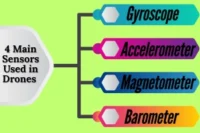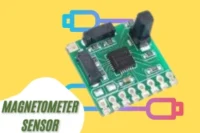Deadcat Frame: The Secret Behind Smoother Footage
Published: 17 Jul 2025
Did you know the deadcat frame got its name because it looks like a cat with its legs spread out? Don’t worry, it’s not as strict as it sounds. A deadcat frame is a special type of drone frame designed to keep the propellers out of the camera’s view. This is perfect for drone pilots who love clean, wide-angle footage. Whether you’re a beginner or already flying FPV, understanding what a deadcat frame is and why it’s used can help you shoot smoother videos and avoid the classic “prop-in-frame” problem.
Propellers in Your Drone Footage
If you have ever flown a drone and noticed spinning blades creeping into your camera shot, you are not alone. It’s one of the most common problems drone pilots face especially when just starting out.
Why It Happens
Many beginners don’t realize that the design of their drone plays a big role in what the camera sees. Here’s why propellers often show up in your footage:
Wide camera angles: Most action cameras have a wide or ultra-wide lens. This captures more scenery, but it also means the camera sees parts of the drone.
Low camera mounting: When the camera is placed close to the frame, it easily catches the spinning props.
Traditional frame layout: Most basic frames place the arms directly in front of the camera, leading to unwanted blade visibility.
Why It’s a Problem
Seeing propellers in your video may seem minor at first, but it can quickly become annoying and reduce the quality of your footage.
Visual distraction: Propeller tips spinning in the corners of your shot can ruin the look of a smooth aerial scene.
Extra editing work: You may have to crop your video or use software tricks to hide the props, both take time and lower quality.
Bad first impression: If you are sharing your footage online or using it for a client, props in the frame can make your work look unprofessional.
How the Deadcat Frame Solves the Propeller Problem
The deadcat frame was made with one clear goal to keep your camera view clean and free of spinning propellers. It changes the shape of your drone just enough to give your camera a better angle and your flight a smoother feel.
Front-Heavy Design Helps Your Camera
The biggest feature of a deadcat frame is its unique arm layout. It moves the front arms farther apart, which opens up your camera’s view.
Wider front arms: The arms are spread out in a way that pushes the propellers outside the camera’s field of view.
No more prop-in-frame issues: You’ll get clean, open footage without any blades cutting across your shot.
Ideal for front-facing cameras: Whether you are using a GoPro, DJI Action, or built-in cam, the deadcat layout works great for forward filming.
Better Balance for Aerial Filming
Besides helping with your view, the deadcat frame also improves how your drone flies, especially for slow, steady moves.
Stable in the air: Its shape gives you better flight balance, which is perfect for capturing cinematic scenes.
Smooth direction changes: The weight is distributed in a way that supports gentle turns and glides.
Less vibration: You will notice fewer shakes or jitters in your video, even without fancy stabilization.
Benefits of Using a Deadcat Frame
Switching to a deadcat frame doesn’t just solve the problem of propellers in your footage, it brings several extra benefits that can improve both your video quality and flying experience.
Clear, Wide-Angle Shots
One of the biggest wins is clean footage. With no propellers in the way, your camera can focus fully on the scene ahead.
No more prop tips in the frame: Your shots stay clear and open, just the way you want them.
Perfect for content creators: Great for YouTube videos, travel vlogs, or paid client work where clean footage is a must.
Wider camera view: You can enjoy the full angle your camera was made to capture, with nothing blocking the lens.
Less Work in Post-Editing
Tired of fixing footage after every flight? A deadcat frame can save you hours in the editing room.
No need to crop or mask footage: Your raw video is cleaner, so you don’t have to cut out corners or use special effects to hide props.
Saves time and effort: More time flying, less time fixing.
Better quality output: Since you are not cropping, you keep the full resolution and detail.
Perfect for Lightweight Cameras
Deadcat frames are made to work smoothly with popular action cameras, without needing extra gear.
Works well with GoPro, DJI Action, and similar cams: These small cameras fit perfectly on deadcat-style drones.
No gimbal needed in many cases: The frame’s design already helps with stability, so you get smooth shots even without heavy add-ons.
Light setup means longer flight times: Less gear on your drone means more time in the air.
Who Should Use a Deadcat Frame?
The deadcat frame is not just for pro flyers. In fact, it’s a great choice for many types of drone users, especially those who care about getting clean, smooth footage.
Beginner Pilots
If you are new to flying drones and want to get better-looking videos right away, the deadcat frame is a smart place to start.
Beginner-friendly design: You don’t need to learn complex builds or wiring tricks.
Better video without upgrades: Even a basic drone setup looks cleaner when you switch to this frame.
Great for learning: Helps you understand how frame shapes affect flight and footage.
FPV Flyers
For freestyle and cinematic FPV pilots, the deadcat frame brings the right mix of freedom and focus.
Perfect for freestyle flights: Gives you room to maneuver without props getting in the way of the camera.
Cinematic flyers love it: Perfect for slow moves, gentle turns, and tracking shots.
Good for parks and open spaces: Lets you focus on creativity, not frame issues.
Drone Videographers
If your main goal is creating videos whether for fun or work, a deadcat frame can instantly improve your results.
Best for nature, real estate, and events: Keeps footage clean and sharp for professional use.
Looks more polished: Your videos will appear more stable and “camera-ready.”
Impress clients and viewers: Clean shots with no prop blur leave a lasting impression.
Conclusion
The deadcat frame is a simple but smart upgrade that makes a big difference. Its unique design helps you capture clean, wide-angle shots without those annoying propellers in the frame. Whether you’re just starting or already exploring FPV flying, the deadcat frame is beginner-friendly and easy to work with. It improves your footage, saves time in editing, and gives your drone a more professional edge. If you’re tired of dealing with prop-in-frame videos, switching to a deadcat frame might be exactly what you need to fly better and shoot smoother.
FAQs
Not all drones are built to fit a deadcat frame. You will need to make sure the size, motor mounts, and layout match your parts. It’s best for custom or FPV-style builds.
Not really. Deadcat frames are better for stable, cinematic flying, not quick turns and high-speed racing. Racing drones usually use different frame shapes built for speed and agility.
Yes, it may feel slightly more front-heavy, especially during sharp moves. But for slow and steady flights, it actually offers better balance. It’s great for capturing smooth video.
Not really. Deadcat frames are priced similarly to regular ones, depending on the brand and size. You can find affordable options for most budgets.





